Tsatsiki or tzatziki is a versatile Greek sauce where you can use kefir as a healthier alternative to yogurt. It is popular for its unique flavor that makes gyros, tacos, souvlaki, and almost any fried or grilled food into a bombshell of new flavors.
Aside from kombucha, discovering healthy fermented dishes can enrich your knowledge of fermentation techniques and different strains of good bacteria. Learn how to make tsatsiki using kefir and take a sneak peek at the most popular staple in the Mediterranean diet and why people are raving about it.
What is tsatsiki or tzatziki?
Tzatziki is a combination of Greek yogurt, cucumber, garlic, vinegar, and herbs. It is famous for being a dip or sauce, but others also make it as a soup. Tzatziki is served as a cold appetizer and is usually left in the fridge for a day or two before consumption.
Through time, there are different variations of tzatziki that are mostly influenced by the country or region where it is made. For example, when Italians make tzatziki, they usually mix in a few sun-dried tomatoes and olive oil to add some localized flavors to the dip.
What does tzatziki taste like?
Tzatziki has a combination of tangy or sour, sweet, creamy, and herby flavors. The yogurt gives it a heavy-cream-like thick consistency but with a dairy flavor, almost like cheese. The garlic, on the other hand, makes tzatziki taste fresh, making it a perfect pair for savory foods. The herbs, like parsley, mint, and cilantro, balance all the flavors in the dip and gives it a healthy kick.
Here are the main ingredients of typical tzatziki:
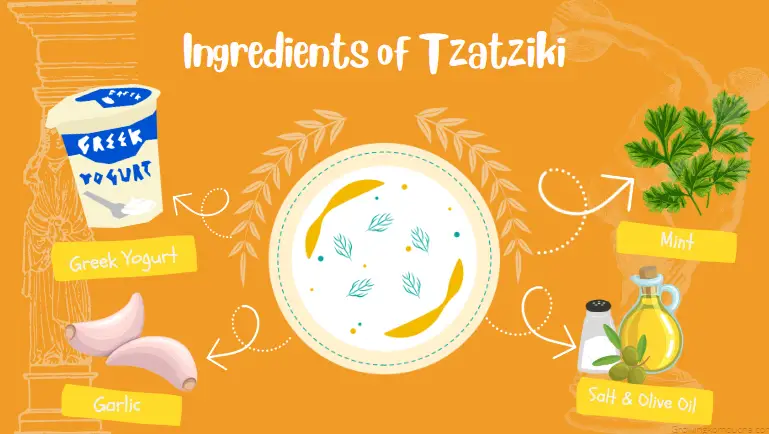
Where did tzatziki come from?
The first known tzatziki came from the Ottoman Empire where the dish started as a combination of ground walnuts and vinegar. As it spread across the eastern Mediterranean region and reached the Balkans and the Middle East, the dish turned into a mixture of yogurt and cucumbers with walnuts.
Tzatziki is often included in a traditional meze or group of side dishes served in the Levant, Greece, Iran, Turkey, and Balkans. Due to its widespread popularity, it comes in a lot of names such as tarator (Bulgaria), cacik (Turkey), cacıg (Armenia), and zhazh (Persia).
In modern-day cuisine, avid fermentation fanatics and Mediterranean cuisine connoisseurs took turns in creating different variations of tzatziki using different localized ingredients.
Health benefits of tzatziki
The base ingredients of tzatziki make it one of the healthiest alternatives to high-carb dips like hummus. According to the U.S. Department of Agriculture, two tablespoons of tzatziki only contain one gram of carbohydrates and sugar compared to 4.2 g of carbohydrates in hummus.
Tzatziki also contains nutrient and antioxidant-rich ingredients which contributes to the following health benefits:
- A low-fat alternative for the prevention of diabetes and coronary heart disease.
- Improves heart health.
- Protects gut health.
- Helps curb appetite due to the protein in yogurt
- Promotes weight loss.
Different variations of tzatziki
Everyone favors a specific taste and with tzatziki, several variations were used to suit specific cultural palates. Sometimes, new tzatziki recipes were born out of ingredient availability and cuisine fusions. Here are some of the popular tzatziki variations
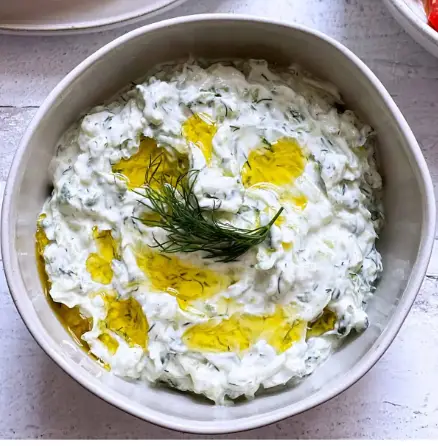
- Vinegar tzatziki: Vinegar tzatziki is probably the most ancient recipe since it was first developed using vinegar and walnuts. It contains white wine vinegar instead of lemon. It only comes with dill but you’re free to add more herbs as desired. Garlic is also used in moderation with vinegar-based tzatziki to balance its overall flavor.
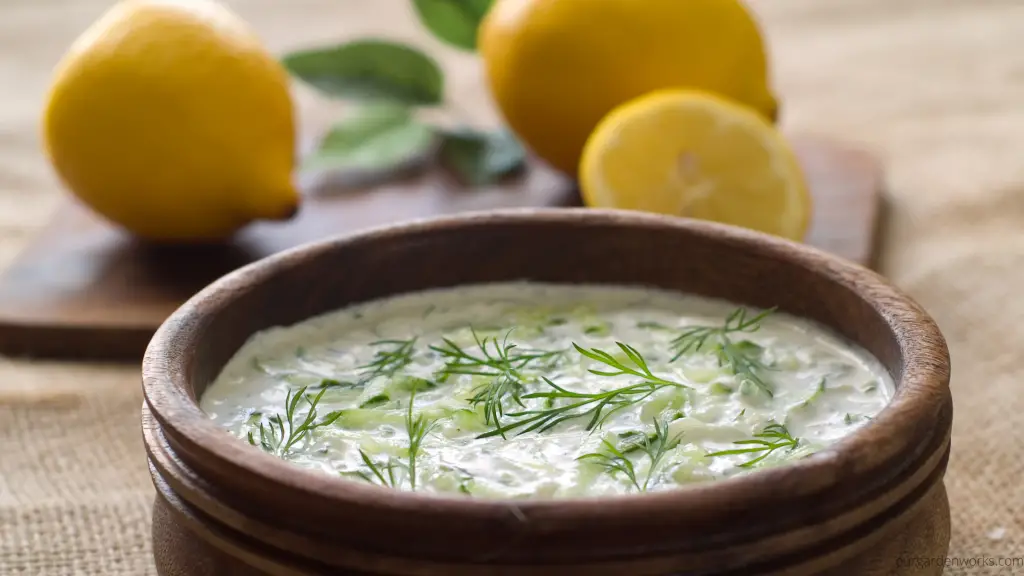
- Lemon tzatziki: Lemon in tzatziki is more popular than vinegar tzatziki. It is often paired with dill and mint leaves and mixed with other herbs like parsley or cayenne pepper.
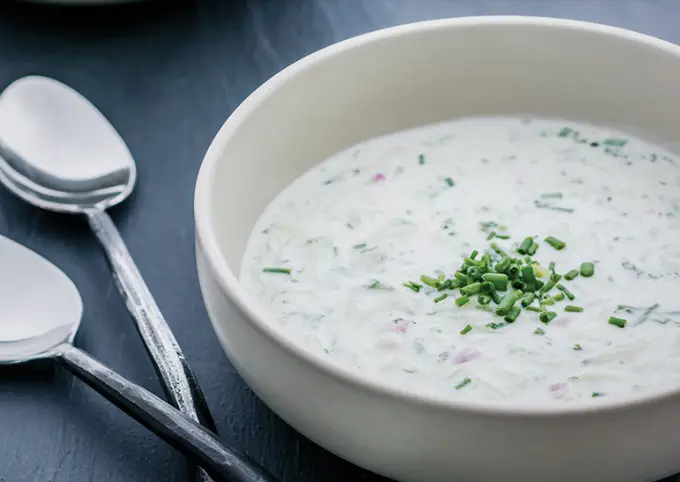
- Tzatziki soup: In Turkish cuisine, tzatziki is more than just a dip. It is served as a cold soup mixed with carrots or beans. In local cooking, it is called Turkish cacik /ja-jeek/. Turkish locals serve it chilled for a more refreshing taste.
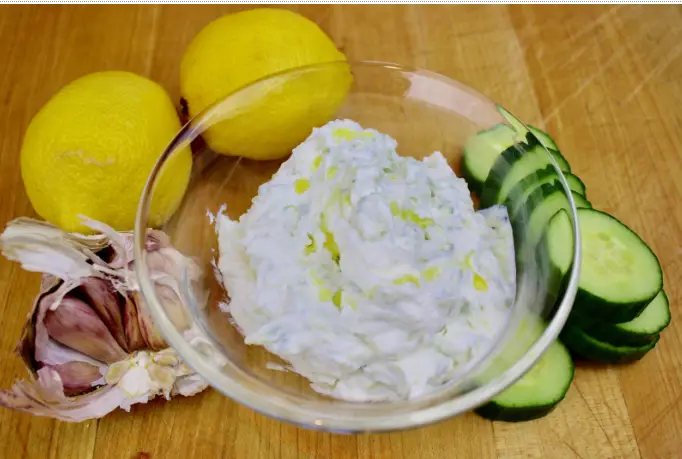
- Kefir tzatziki: Kefir tzatziki is a variation coined by fermentation advocates and health-conscious individuals. Kefir is also a fermented product like yogurt but with a more potent flavor. It is equally healthy and can be made from scratch at home to make tzatziki. The kefir used in tzatziki is thick and creamy which is developed through a prolonged fermentation of kefir milk.
How to make kefir tzatziki from scratch
Kefir is often compared to Greek yogurt because they have a similar flavor and country of origin – Turkey. However, kefir has a thinner texture and contains a different strain of beneficial bacteria.
With an almost similar tangy taste to yogurt, kefir hosts unique health benefits that can make your typical tzatziki more nutritious. It is specifically rich in magnesium which improves heart and nerve health.
Also, kefir has the amino acid tryptophan that triggers the release of serotonin or the happy hormone which can help improve your mood and alleviate depression.
With both health benefits and delectable taste, check out the steps on how to make tzatziki using kefir from scratch below:
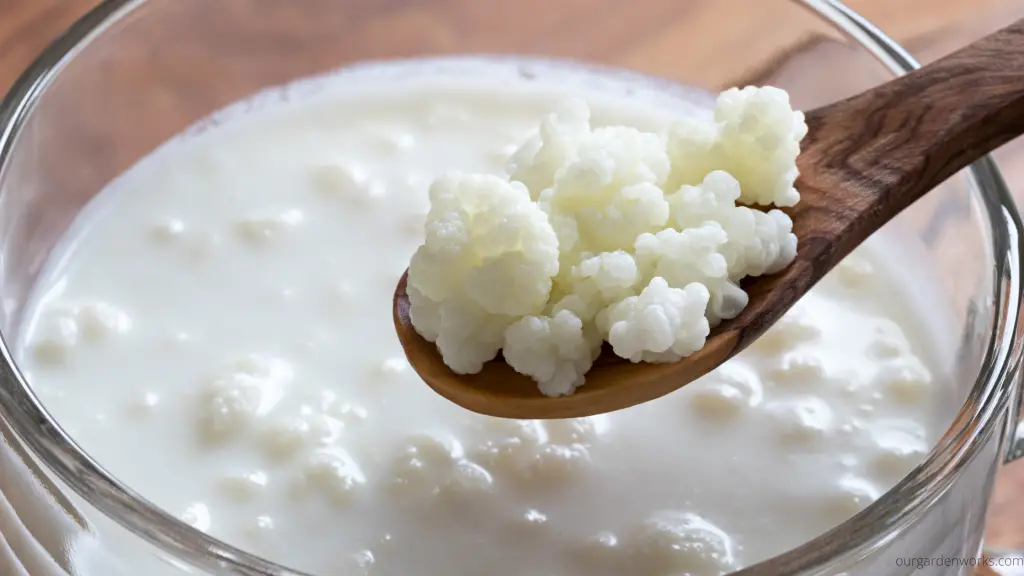
Ferment thick kefir or kefir milk cheese
Kefir is made by mixing kefir grains and cow or goat milk. The fermentation only takes 24 hours to turn regular cow milk into kefir. However, you’ll need a thicker consistency for your tzatziki. So, you’ll need to ferment another two days to achieve that creamy cheese-like texture.
Here’s what you’ll need:
Ingredients and materials
- 28 to 30 grams of kefir grains.
- 1-quart mason jar.
- 1 strainer.
- 1 unbleached coffee filter.
- 1 coffee filter
- 1 rubber band
- 1 funnel
Directions:
- In a clean mason jar, place two tablespoons of kefir grains and pour cow’s milk.
- Cover the mason jar with an unbleached coffee filter and seal it with a rubber band.
- Place the jar in a clean corner of your pantry or kitchen and let it ferment at room temperature for 24 hours.
- The next day your kefir is ready! Strain the kefir grains and place them in a new jar with a lid. Don’t throw the kefir grains because you can still use them to make another batch of kefir.
- Place the jar in the fridge for another 24 hours.
- The next day, shake the chilled kefir jar and open the lid.
- Prepare the strainer by placing a funnel on top of a jar and lining it with a coffee filter.

- Pour the kefir on the coffee filter to separate the cheese from the whey or excess liquid. Place the jar with the funnel in the fridge for two days to make it creamier.
- After two days, your kefir cheese or thick kefir is ready! Put the strained kefir cheese into a clean jar or bowl and start preparing your tzatziki.

Grate the cucumber
To prepare the tzatziki, grate one or two cucumbers and place them in a bowl. Add a few pinches of salt to remove the juice from the cucumber and let it sit for an hour or two. Once the fluid is extracted from the grated cucumbers, use a cheesecloth or a bamboo paper towel to squeeze the juice out of the cucumber bits. Then, mix the squeezed cucumber with the kefir cheese.
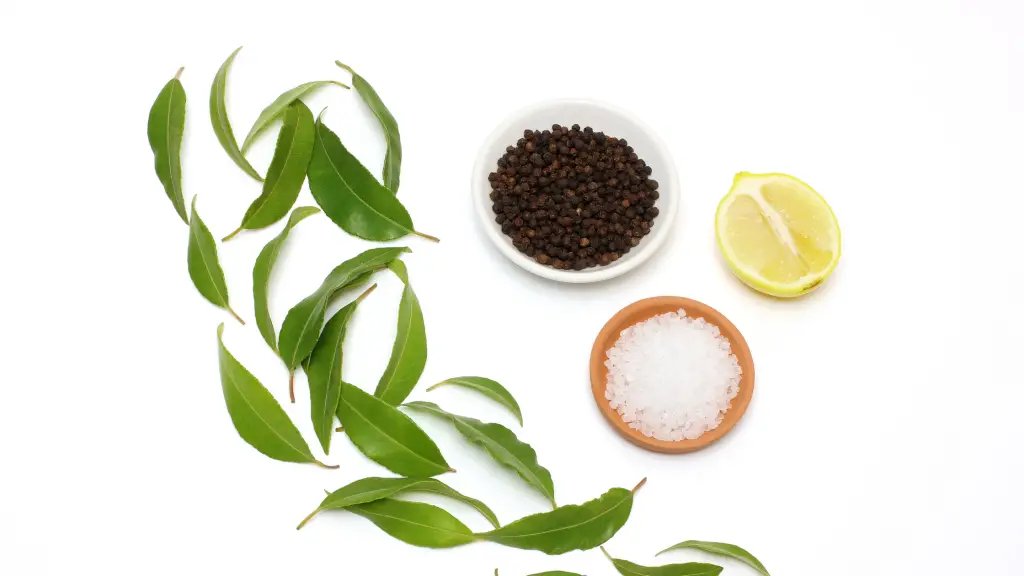
Add the herbs and spices
Add new flavors to your tzatziki by adding garlic, herbs, and spices. Here’s a typical list of ingredients used in traditional tzatziki recipes. Feel free to add a few spices or herbs to achieve your desired flavor.
Ingredients
- 1 to 2 cloves of garlic – crushed.
- A pinch of salt.
- A pinch of pepper.
- 275 grams of lemon juice.
- A dash of olive oil.
- Dill.
- Mint.
- Thyme.
Add all the ingredients to your kefir cheese. Take a few spoonfuls to adjust the flavor.

Pair your kefir tzatziki with your favorite grilled or seared meat or fish
For a more intense flavor, place the kefir tzatziki in the fridge for 24 hours before consumption to blend all the flavors from the ingredients. Then, add it to your favorite meat dishes or snacks like burritos, tacos, souvlaki, gyros, or vegetable sticks.
Frequently Asked Questions (FAQs)
Is kefir better than yogurt?
Kefir and yogurt are almost the same when it comes to flavor, but kefir contains more probiotics, amino acids, and intense flavor. It is also easy to make and can be done at home using kefir grains.
Is tzatziki sauce healthy?
Yes. It contains probiotics and nutrient-dense ingredients like garlic, herbs, and lemon that can help improve heart and digestive health. It is a perfect low-carb and low-calorie alternative to high-fat sauces like hummus.
Can you buy tzatziki sauce in the grocery store?
Tzatziki is available in almost any health food store. It is often in the frozen food section next to kimchi and other fermented foods. Sometimes, they are placed in the dairy section.
Is tzatziki healthier than ranch?
If the basis is the fat content, tzatziki is way healthier than ranch. Kefir contains around 2 to 3 grams of fat while ranch has a whopping 51 grams of fat. If you’re at risk for developing heart problems or fatty liver, you may want to switch to kefir dressings like kefir tzatziki to get the same flavor but with healthier ingredients.
What is the difference between tahini and tzatziki?
Tahini and tzatziki are both creamy but differ in taste and ingredients. Tahini is made of ground sesame seeds and has the consistency of peanut butter. It is not tangy and has a more earthy flavor. Tzatziki, on the other hand, is made of yogurt and cucumber with tangy, sweet, and herby flavors.
Does tzatziki contain dairy?
Yes. It is made of yogurt-derived cow or goat milk. In some cases, kefir is also used as an alternative to yogurt.
Is tzatziki good for weight loss?
Yes. In moderation, tzatziki is a good low-carb alternative to other sauces or dips. It also contains yogurt, which can help curb appetite and promote good digestion.
How long does homemade tzatziki last?
Homemade tzatziki can last for about four to five days in the fridge after opening. If the tzatziki is not contaminated and well sealed, it can last for two weeks.
